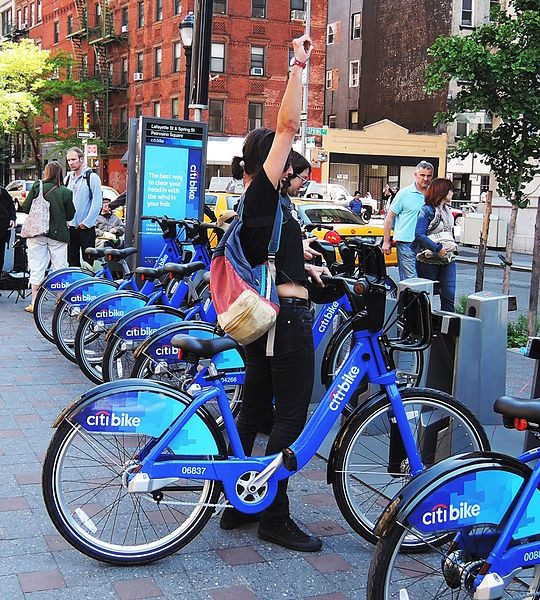Will NYC’s Bike Sharing Service Last? Citi Bike Needs ‘Tens Of Millions Of Dollars’ To Survive

New York City attempted to turn over a new life with its bike-sharing program, Citi Bike — with the goal of curbing traffic, air pollution, and boosting the European mindset of biking in the city. But it appears the program already has financial problems. According to the Wall Street Journal, Citi Bike will need “tens of millions of dollars” in order to last.
If you’ve seen the bright blue bikes lined up along the street in the city, you’ve probably come across a Citi Bike station. With a daily pass, you can rent out bikes and ride them anywhere in the city, to where there’s another bike station to drop them off. The program, similar to what many European cities already have, is meant to encourage exercise and bike-riding as well as to curb car use and pollution.
There were apparently several problems that caused the program to struggle, including equipment damage during hurricane Sandy, glitches in software, and a harsh winter this year that left people unwilling to hop on bikes and charge through ice and snowstorms. Certainly, it’s no fun to be on a bike during a New York City winter.
“We are working as diligently as we can to help the company resolve them and strengthen the program going forward,” Polly Trottenberg, the city’s new transportation commissioner, said during an appearance at the City Council’s transportation committee.
A daily pass costs $9.95 plus tax, and a seven-day pass costs $25 plus tax. The program has been successful in selling annual memberships, but has struggled in getting people to purchase 24-hour passes. Some argue that it's cheaper to just buy a bike to own rather than pay annual fees.
Also, it’s been difficult for Citi Bike workers to move the bikes based on the commuting patterns. For example, some people may ride a Citi Bike to work, then leave it in Midtown instead of taking it back down to the lower part of Manhattan. Because of financial strain, Citi Bike has had to lay off some workers. “The bottom line is that New Yorkers deserve better,” Caroline Samponaro, senior director at Transportation Alternatives, told the WSJ. “The arc should be improving. All signs should be…that the demand, the usage, the attention is leading that arc up.”
Published by Medicaldaily.com



























